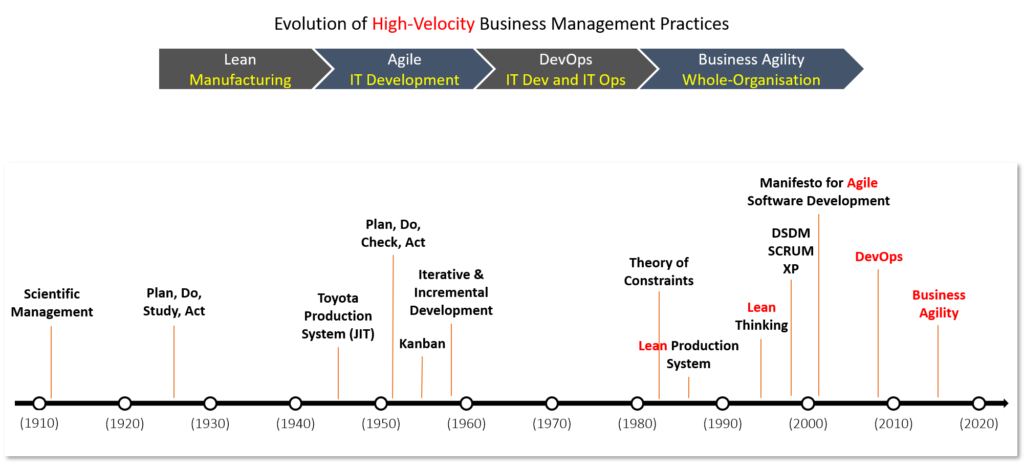Business Agility is the latest evolution of business management practices, that emphasises how high-velocity can be a sustainable competitive advantage.
We could go further back in time, our journey begins around 1910 with Scientific Management.
Whilst we won’t cover everything that you can see, there are various key events within this timeline.
For example, Lean which was developed in manufacturing was practiced in various frameworks and techniques in the 20th century.
Agile Software Development, which begun as early as the 1950’s, but really became popular in the later 1990’s and early 21st century.
DevOps, another IT practice that evolved from Agile Software Development and IT Service Management (ITSM) around 2009, and
Business Agility which was practiced earlier but became more popular following DevOps around 2015.

Scientific Management (aka Taylorism) – 1910’s
https://en.wikipedia.org/wiki/Scientific_management
Select methods based on science, not “rule of thumb.” Rather than allowing each individual worker the freedom to use their own “rule of thumb” method to complete a task, you should instead use the scientific method to determine the “one best way” to do the job.
Assign workers jobs based on their aptitudes. Instead of randomly assigning workers to any open job, assess which ones are most capable of each specific job and train them to work at peak efficiency.
Monitor worker performance. Assess your workers’ efficiency and provide additional instruction when necessary to guarantee they are working productively.
Properly divide the workload between managers and workers. Managers should plan and train, while workers should implement what they’ve been trained to do
Plan, Do, Check/Study Act – 1920’s
https://en.wikipedia.org/wiki/PDCA
“PDCA (plan–do–check–act or plan–do–check–adjust) is an iterative four-step management method used in business for the control and continuous improvement of processes and products.
The concept of PDCA is based on the scientific method, as developed from the work of Francis Bacon (Novum Organum, 1620). The scientific method can be written as “hypothesis–experiment–evaluation” or as “plan–do–check”.

